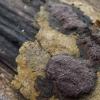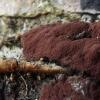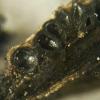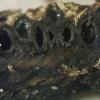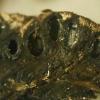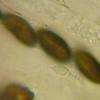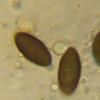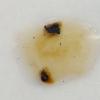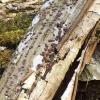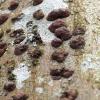
30-03-2020 20:45
Mirek GrycHi. I found two Hypoxylon collections growing on�

27-03-2020 10:40
Hola Imágenes tomadas el 14 de Marzo es un peque�

29-03-2020 17:36
 William Slosse
William Slosse
Good evening forum,at first glance I thought I was

28-03-2020 22:46
Eduard OsieckHas somebody the following papers available: Shoe

29-03-2020 18:04
 Edmond POINTE
Edmond POINTE
Bonjour a tous,Trouvé sur crotte fimicole culture

29-03-2020 22:59
Ethan CrensonHello all, I hope everyone is safe and comfortabl

28-03-2020 14:15
Tsuyoshi HosoyaDear all, I recently found a specimen of Durella

29-03-2020 19:14
Thorben HülsewigHi there,yesterday I found this cosmospora on a St
Hypoxylon on Carpinus?
Mirek Gryc,
30-03-2020 20:45
Hi.
I found two Hypoxylon collections growing on Carpinus yesterday. The shape of the sporocarps varies but I suspect it is the same species. So far, I've only microscoped the first one.
The keys contained in the work "New species of Hypoxylon from western Europe and Ethiopia" lead me to the Hypoxylon commutatum. I compared the features of my sporocarps to all species found on Carpinus, but none match mine.
Description for Hypoxylon commutatum is quite scanty but only in it I did not find any features that would exclude this species.
The reaction of porus in my collection was very capricious. Only a few ascus have a slight bluish discoloration of porus. Over 95% of ascus do not show reaction to iodine. In no mature ascus I have not observed a reaction.
Spores in my collection slightly larger than those listed on the page:
http://pyrenomycetes.free.fr/hypoxylon/html/Hypoxylon_commutatum.htm
In the original description, however, in "Pyrenomycetes germanici" they give slightly larger ones that perfectly match the size of the spores in my collection.
Perhaps I have not reached all species that occur on Carpinus so I am asking you for help.
The keys contained in the work "New species of Hypoxylon from western Europe and Ethiopia" lead me to the Hypoxylon commutatum. I compared the features of my sporocarps to all species found on Carpinus, but none match mine.
Description for Hypoxylon commutatum is quite scanty but only in it I did not find any features that would exclude this species.
The reaction of porus in my collection was very capricious. Only a few ascus have a slight bluish discoloration of porus. Over 95% of ascus do not show reaction to iodine. In no mature ascus I have not observed a reaction.
Spores in my collection slightly larger than those listed on the page:
http://pyrenomycetes.free.fr/hypoxylon/html/Hypoxylon_commutatum.htm
In the original description, however, in "Pyrenomycetes germanici" they give slightly larger ones that perfectly match the size of the spores in my collection.
Perhaps I have not reached all species that occur on Carpinus so I am asking you for help.
Spores:
(10.9) 11.3 - 12.1 (12.5) × (4.8) 5 - 5.5 (6) µm
Q = (2) 2.1 - 2.3 (2.6) ; N = 15
Me = 11.7 × 5.3 µm ; Qe = 2.2
Q = (2) 2.1 - 2.3 (2.6) ; N = 15
Me = 11.7 × 5.3 µm ; Qe = 2.2
10.92 4.75
11.55 5.51
11.27 4.98
11.73 4.99
12.02 5.44
12.50 4.81
11.74 5.08
12.10 5.43
12.44 5.05
11.53 5.51
11.60 5.07
11.80 6.00
11.21 5.45
11.61 5.51
11.79 5.50
11.55 5.51
11.27 4.98
11.73 4.99
12.02 5.44
12.50 4.81
11.74 5.08
12.10 5.43
12.44 5.05
11.53 5.51
11.60 5.07
11.80 6.00
11.21 5.45
11.61 5.51
11.79 5.50
Thank you in advance.
Mirek
